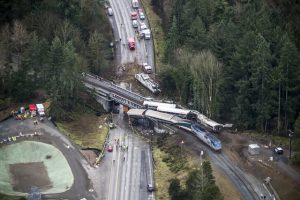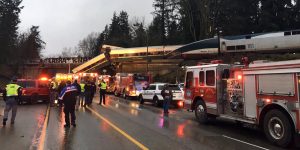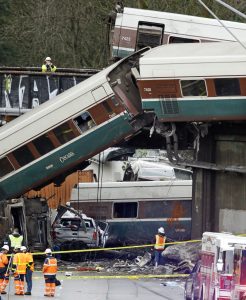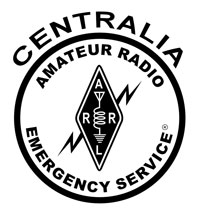
At our training Monday evening, we dissected the Amtrak Cascade 501 train derailment near DuPont which occurred on December 28, 2017. Using a PowerPoint presentation, EC Bob Willey took the team through the Mass Casualty Response to this disaster. At approximately 7:40am, during the morning Interstate 5 commute, Amtrak Cascade 501 on its inaugural run over the newly completed Point Defiance Bypass, was travelling 78mph when it entered a 30mph corner and derailed. One engine and 11 passenger cars left the tracks, several tumbling onto Interstate 5. 85 passengers and crew were on the train at the time of the derailment. 62 passengers and crew were injured, 3 killed and 8 were hurt in vehicles on the interstate.

The dissection of this disaster had a twofold purpose. For those not familiar with a mass casualty event, it was important to describe for them the confusion – especially to communications – that comes about when literally hundreds of first responders arrive at a disaster scene. We discussed how the command process, via radio, builds from the first engine on scene, through Incident Command and finally into a Unified Command Structure. This process – initial response through Incident Command is very much like what Amateur Radio Emergency Service team members know as “Net Control”. As the presentation played out, team members were able to see how an experienced Net Control can calm the situation, establish control, dictate work assignments, and monitor the safety of everyone on the net, just as the command and control officers during the derailment response did.

While no ARES team participated in this disaster, Centralia ARES has trained for such as response should we be requested by one or both of our served agencies. We are not first responders but well trained volunteers augmented with vital communications tools can always be useful. To be useful, however, our team must know and understand both the Incident Command and Net Control functions. During the first quarter of our 2018 training, we will work to bring a high level of professionalism to our Net Control efforts alongside our regular disaster exercise training. Over the next twelve weeks or so, we will work on more complicated deployment exercises, disaster communications and some planned failure training. We’ll also be dealing with disaster exercises that spread our team throughout the community to deal with evacuations, sheltering, windshield surveys and command and communication vehicle deployments.
It should be a busy training schedule. Should a disaster such as occurred near DuPont happen here, we plan on being ready and prepared to help where we can.

